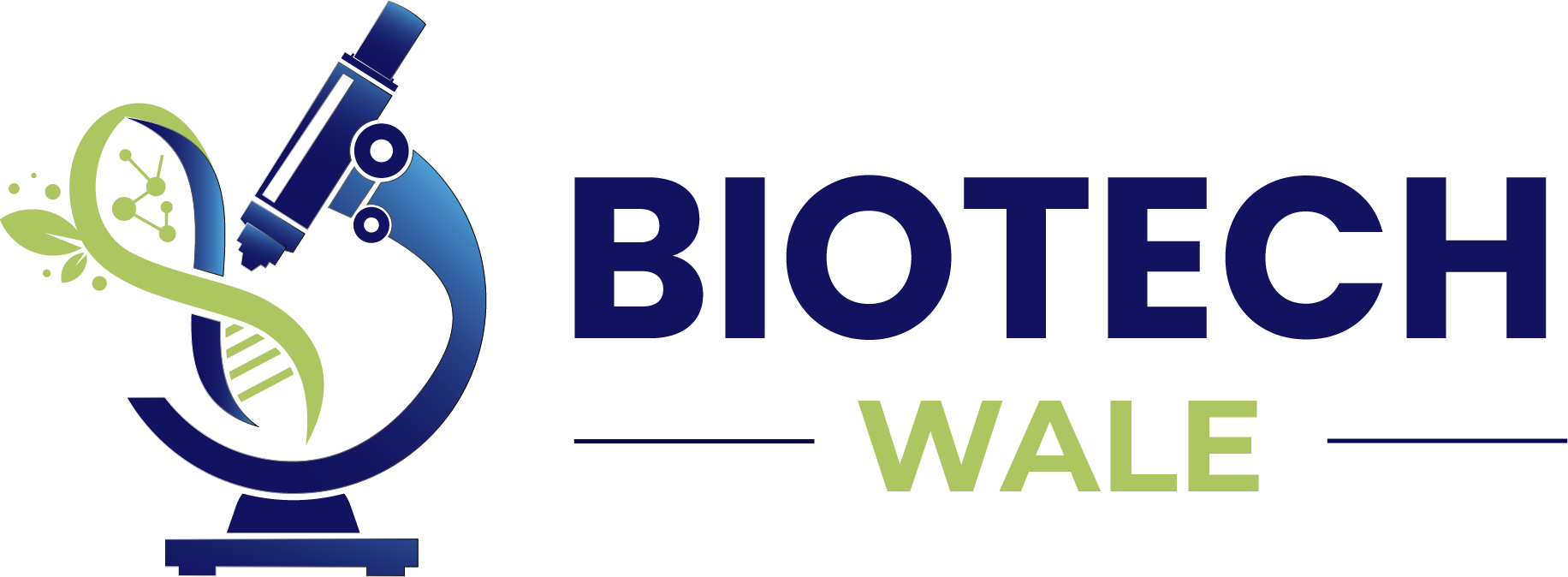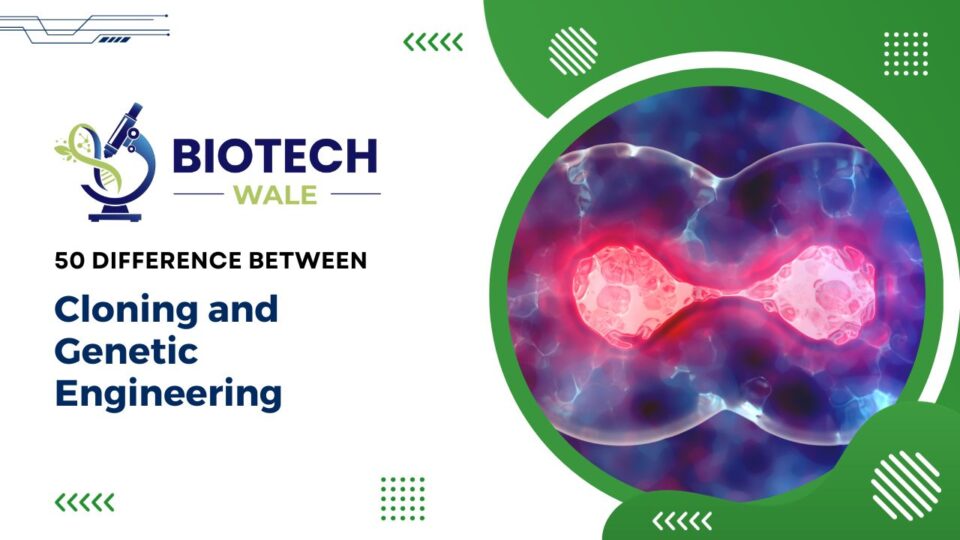Genetic engineering and cloning are two related but separate branches of biotechnology that involve modifying organisms’ DNA for a variety of reasons.
Genetic engineering and cloning both give rise to ethical, environmental, and safety issues that require rigorous deliberation and regulation. Public debates and laws differ by location and frequently cover the possible advantages and disadvantages of these technologies.
Cloning is the process of making an organism, cell, or DNA molecule that is genetically identical to the original. This can be accomplished via a variety of techniques, and cloning has long been the focus of scientific investigation and discussion.
While cloning has the potential to significantly advance science and medicine, it also presents ethical and moral questions. Concerns concerning the rights and welfare of cloned organisms, possible health hazards, and the potential use of cloning for less moral goals, such as human cloning for reproduction, are all related to the practise of cloning.
Countries have different cloning laws and restrictions, and people’s views on the subject can vary widely. Research on cloning methods is still being done by scientists, and debates over the morality and consequences of cloning are still ongoing.
The deliberate altering of an organism’s genetic material, typically its DNA, in a way that does not happen naturally through mating or natural recombination is known as genetic engineering, sometimes known as genetic modification or genetic manipulation. This method enables the addition, deletion, or modification of certain genes inside the genome of an organism, changing its traits or characteristics. Numerous industries have been transformed by genetic engineering, including biotechnology, medicine, and agriculture.
It’s crucial to remember that genetic engineering is a discipline that is constantly developing, with new findings and methods appearing all the time. Within the scientific community and society at large, there is ongoing discussion and scrutiny of the ethical, legal, and societal ramifications of these developments.
| S.No. | Aspects | Cloning | Genetic Engineering |
| 1 | Definition | Replicating an entire organism | Modifying specific genes or DNA sequences |
| 2 | End Result | Produces genetically identical organisms | Alters the genetic makeup of an organism |
| 3 | Genetic Variation | Low, as clones are identical | High, as it can introduce variations |
| 4 | Process Complexity | Lower complexity | Higher complexity |
| 5 | Purpose | Replication for various reasons | Modification for specific purposes |
| 6 | Natural Occurrence | Some organisms clone naturally | Rare in nature |
| 7 | Number of Organisms | Typically, one organism is produced | Multiple organisms can be modified |
| 8 | Techniques | Somatic cell nuclear transfer (SCNT) | Gene insertion, deletion, or editing |
| 9 | Cloning Efficiency | Low, with many failures | Varies depending on the method used |
| 10 | Ethical Concerns | Concerns related to cloning ethics | Concerns related to genetic manipulation |
| 11 | Reproduction Method | Asexual reproduction | Sexual reproduction unaffected |
| 12 | Age of Organisms | Can clone mature organisms | Often performed on embryos or cells |
| 13 | Application Focus | Reproduction, conservation, cloning pets | Medicine, agriculture, biotechnology |
| 14 | Genetic Diversity | Reduced due to identical genes | Maintained or increased depending on aim |
| 15 | Genetic Modification | No genetic modification | Involves genetic modification |
| 16 | Risk of Mutations | Low risk as genes are copied | Risk of unintended mutations |
| 17 | Time Consumed | Quicker process | May require more time |
| 18 | Success Rate | Often low | Varies based on technique and expertise |
| 19 | Clone’s Lifespan | Similar to the original organism | Varies based on genetic changes |
| 20 | Environmental Impact | Lower impact as it doesn’t introduce new genes | Potential ecological consequences |
| 21 | Reproductive Capacity | Can reproduce without a partner | Still requires natural mating |
| 22 | Genetic Preservation | Preserves the entire genetic makeup | Alters specific genes as needed |
| 23 | Regulation | Subject to cloning regulations | Subject to genetic engineering laws |
| 24 | In Vitro vs. In Vivo | Often performed in vitro | Can be in vitro or in vivo |
| 25 | Parental Influence | Clones have one biological parent | Genetic engineering retains both parents |
| 26 | Transgenerational Impact | Affects future generations | Limited to the modified organism |
| 27 | Adaptation Potential | Limited as clones inherit traits | Greater potential to adapt to new environments |
| 28 | Genetic Diseases | May inherit diseases from the donor | Can potentially correct genetic diseases |
| 29 | Agricultural Use | Used for livestock breeding | Used for crop improvement |
| 30 | Preservation of Species | Can help preserve endangered species | Used for preserving traits in species |
| 31 | Cloning in Nature | Some organisms naturally clone (e.g., bacteria) | Rarely seen in natural organisms |
| 32 | Potential for Immortality | Clones can theoretically extend an organism’s lifespan | Genetic engineering can’t achieve immortality |
| 33 | Complexity of Procedure | Generally less complex than genetic engineering | Genetic engineering often involves more intricate steps |
| 34 | Gene Combination | Maintains the same gene combination | Alters gene combinations as needed |
| 35 | Replicating Entire DNA | Replicates entire DNA of an organism | Targets specific DNA sequences |
| 36 | Conservation Role | Can aid in preserving biodiversity | Can assist in conserving desired traits |
| 37 | Identical Traits | Clones exhibit identical physical and behavioral traits | Genetic engineering may or may not result in identical traits |
| 38 | Cloning Efficiency | Efficiency depends on species and technique | Efficiency varies but can be improved with experience |
| 39 | Ethical Concerns | Concerns regarding the treatment of surrogate animals | Ethical concerns about modifying organisms |
| 40 | Evolutionary Impact | Limited impact on the evolutionary process | Genetic engineering can influence evolution over time |
| 41 | Genetic Makeup | Clones have the exact genetic makeup of the donor | Genetic engineering alters specific genetic elements |
| 42 | Purpose in Medicine | Cloning used for regenerative medicine | Genetic engineering used for gene therapy |
| 43 | Genetic Patents | May lead to patent disputes over cloned organisms | Genetic engineering can be patented for specific applications |
| 44 | Genetic Diversity | Reduced genetic diversity in cloned populations | Genetic engineering may or may not affect diversity |
| 45 | Risks in Agriculture | Cloned livestock may face health issues | Genetic engineering may address agricultural challenges |
| 46 | Multiple Genes Modified | Typically, no multiple genes are modified | Genetic engineering can modify multiple genes simultaneously |
| 47 | Inherited Traits | Clones inherit all traits from the donor | Genetic engineering can target specific traits for modification |
| 48 | Medical Ethics | Ethical concerns in cloning human organs | Ethical concerns in editing human genes for enhancement |
| 49 | Environmental Concerns | Cloning has fewer environmental concerns | Genetic engineering may have ecological consequences |
| 50 | Impact on Genetic Diversity | Cloning reduces diversity within a species | Genetic engineering can impact diversity depending on applications |
Frequently Asked Questions (FAQs)
Q1: What possible advantages does cloning have?
Cloning may help with medical treatments including organ transplantation and the creation of personalised medicine, as well as advance scientific research and agricultural methods.
Q2: Are humans cloneable?
Although reproductive human cloning is technically feasible, it is largely regarded as unethical and is prohibited in many nations due to safety and ethical issues. Research on the therapeutic uses of cloning, such as the production of stem cells, is ongoing.
Q3: What is the status of genetic engineering and cloning research right now?
With continued efforts to expand methodologies, address moral issues, and investigate novel applications in industries like biotechnology, agriculture, and medicine, research in these fields is still moving forward.
Q4: Has human organ cloning for transplantation been accomplished with success?
Fully functional cloned organs for transplantation had not yet been successfully created in humans as of my most recent information update in September 2021. Practical applications may still be years away, but research in this area is currently ongoing.
Q5: Why are CRISPR-Cas12 and CRISPR-Cas13 different from CRISPR-Cas9, and what are they?
Alternative gene-editing systems similar to CRISPR-Cas9 include CRISPR-Cas12 and CRISPR-Cas13. They are being studied for particular applications including gene regulation and diagnostics because of their distinctive characteristics.





Average Rating